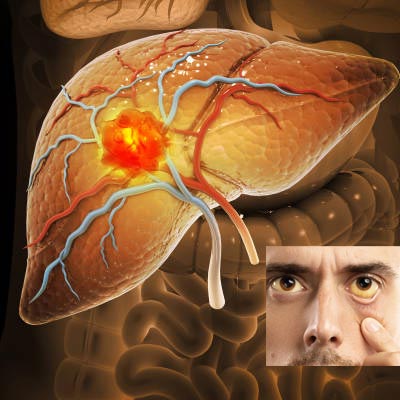Liver disease is a broad term encompassing various conditions that affect the liver, an essential organ responsible for numerous vital functions in the body. Jaundice, a common symptom of liver disease, occurs when there is an excess buildup of bilirubin, resulting in yellowing of the skin and eyes. As a general physician, understanding the medical terminology associated with liver disease and jaundice is crucial for accurate diagnosis and effective treatment. In this comprehensive guide, we will delve into the intricacies of liver disease, explore common symptoms, and discuss available treatment options.
What are Liver Disease ?
Liver disease, also known as hepatic disease, encompasses a broad spectrum of conditions that affect the liver's structure and function. The liver plays a vital role in metabolism, digestion, detoxification, and the production of essential proteins. Liver disease can result from various factors, including viral infections, alcohol abuse, autoimmune disorders, metabolic disorders, and genetic abnormalities.

Types of Liver Disease
- Viral Hepatitis: Hepatitis viruses, including hepatitis A, B, C, D, and E, can cause inflammation of the liver and lead to acute or chronic hepatitis.
- Alcoholic Liver Disease: Excessive alcohol consumption can damage liver cells, leading to fatty liver, alcoholic hepatitis, fibrosis, and cirrhosis.
- Non-Alcoholic Fatty Liver Disease (NAFLD): NAFLD is characterized by the accumulation of fat in the liver, often associated with obesity, insulin resistance, and metabolic syndrome.
- Cirrhosis: Cirrhosis is the advanced stage of liver fibrosis, marked by extensive scarring and impaired liver function, commonly resulting from chronic liver disease or alcohol abuse.
- Liver Cancer: Primary liver cancer, most commonly hepatocellular carcinoma (HCC), can develop in individuals with chronic liver disease, cirrhosis, or viral hepatitis.
- Autoimmune Liver Diseases: Autoimmune hepatitis, primary biliary cholangitis (PBC), and primary sclerosing cholangitis (PSC) are autoimmune conditions that affect the liver, leading to chronic inflammation and damage.
What are Jaundice?
Jaundice is a common symptom of liver disease characterized by the yellowing of the skin, mucous membranes, and sclerae (the whites of the eyes) due to elevated levels of bilirubin in the blood. Bilirubin is a yellow pigment produced during the breakdown of red blood cells. When the liver is unable to metabolize bilirubin effectively, it accumulates in the bloodstream, resulting in jaundice.
Symptoms of Liver Disease and Jaundice
The symptoms of liver disease and jaundice may vary depending on the underlying cause and the severity of liver damage. Common symptoms include
- Yellowing of the skin, eyes, and mucous membranes (jaundice)
- Fatigue and weakness
- Abdominal pain or discomfort
- Nausea and vomiting
- Loss of appetite and weight loss
- Dark urine and pale stools
- Swelling in the legs and abdomen (edema and ascites)
- Easy bruising and bleeding
Diagnosis of Liver Disease and Jaundice
Diagnosing liver disease and jaundice typically involves a thorough medical history, physical examination, laboratory tests, imaging studies, and sometimes liver biopsy. Blood tests may reveal elevated liver enzymes, bilirubin levels, and other markers of liver dysfunction. Imaging modalities such as ultrasound, computed tomography (CT), and magnetic resonance imaging (MRI) can provide detailed images of the liver and help assess its structure and function. In some cases, a liver biopsy may be performed to obtain a tissue sample for further analysis.
Treatment of Liver Disease and Jaundice
The treatment of liver disease and jaundice depends on the underlying cause and severity of the condition. Treatment modalities may include
- Lifestyle Modifications: Adopting a healthy lifestyle, including a balanced diet, regular exercise, weight management, and avoiding alcohol or drug abuse, is essential for managing liver disease.
- Medications: Depending on the specific liver condition, medications may be prescribed to manage symptoms, reduce inflammation, or treat underlying infections.
- Antiviral Therapy: Antiviral medications are used to treat chronic viral hepatitis infections (e.g., hepatitis B and C) to suppress viral replication and prevent liver damage.
- Immunomodulatory Therapy: Immunosuppressive drugs may be prescribed to manage autoimmune liver diseases by suppressing the immune system's abnormal response.
- Liver Transplantation: In severe cases of liver failure or advanced liver disease, liver transplantation may be considered as a life-saving treatment option.
liver disease and jaundice are significant medical conditions that require prompt diagnosis and appropriate management. As a general physician, it is essential to be familiar with the medical terminology associated with these conditions and to recognize the common symptoms. By understanding the causes, symptoms, diagnosis, and treatment options for liver disease and jaundice, healthcare providers can effectively care for patients with these conditions and improve their overall health and quality of life.
